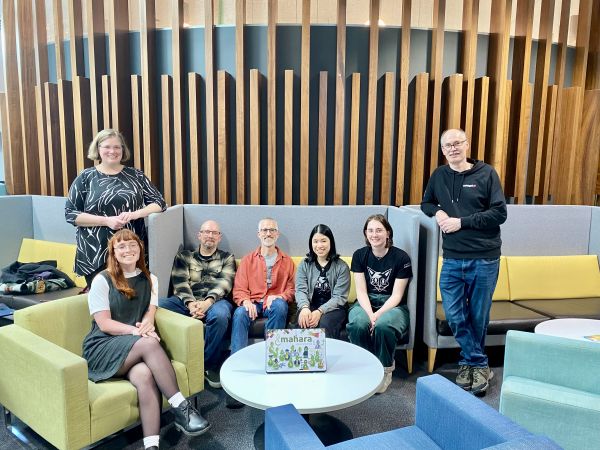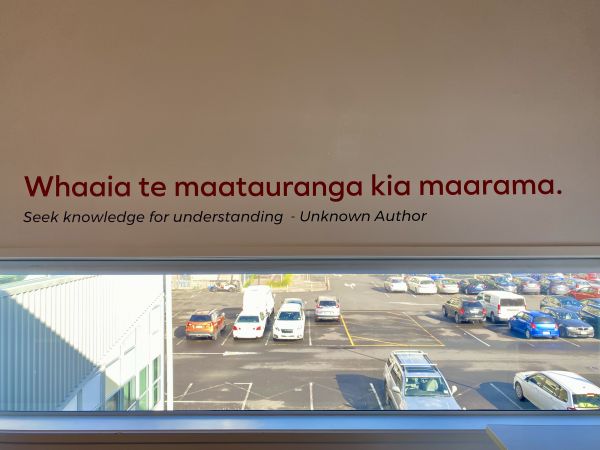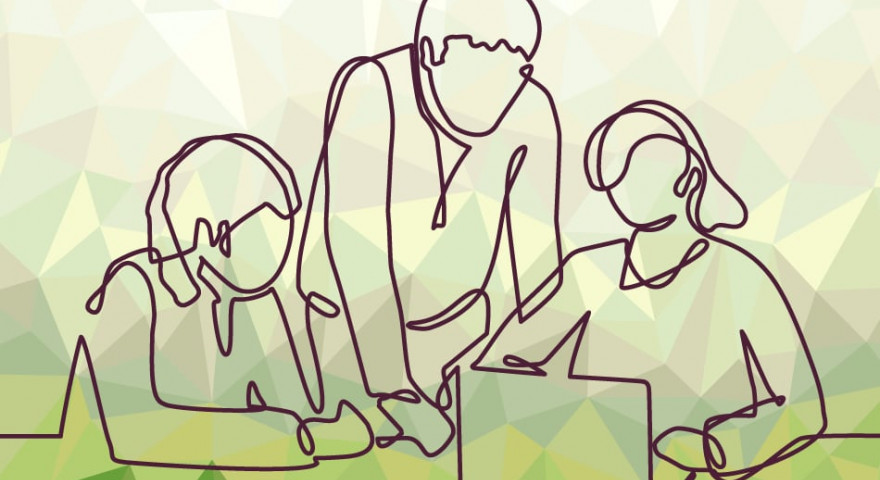Reflecting can help consolidate learning and ideas and transform thoughts into understanding. Instead of having your learning spread across many places, portfolios provide an organised place that grows with you, ensuring your learning or professional development history isn’t lost. Mahara is a flexible open source ePortfolio platform where learners, educators, and professionals can create, manage, and showcase portfolios for any stage in their journey.
In the first week of September 2024, the Mahara project team at Catalyst organised Mahara Hui Tāmaki Makaurau. I’m Courtney Rose Brown, marketing executive at Catalyst and fairly new to Mahara. I joined Mahara Hui for my own professional development, and I wanted to share my insights on the value of community events and open source software.

Portfolios have many uses
It was great to hear directly from members of the Mahara community to understand why they need portfolios. Each sector uses portfolios differently, but they hold the same weight. Mahara enables them to capture and deliver what matters to them as it's flexible to their organisation's needs.
I use Mahara in a way that works for me, primarily as a hub of information:
- I record ideas
- track goals
- document feedback
- and build to support my work.
Initially, I struggled to understand the flexibility of portfolios as I was unfamiliar with the term. But when I started using Mahara, I realised I had used portfolios throughout my studies. I kept reading records and practised reflection, which I found immensely valuable in shaping ideas, tracking progress, and recognising accomplishments. My experience had been shaped by academic structures and requirements for assignments, so I couldn’t translate the idea due to the different contexts. However, since using Mahara, I can't imagine working without it.
Mahara Hui was an opportunity for open source collaboration and to connect with the wider Mahara community to understand their needs. Most of the Mahara project team were able to attend, alongside folks in the health and higher education sectors. A highlight was hearing how passionate everyone was about using portfolios and the direction that Mahara could go. One person shared they liked Mahara because of “how human and people-orientated it is” and that Mahara is “software that works for people.”

Portfolios for accreditation
Healthcare uses portfolios for accreditation as a way to structure and maintain records of competencies. For example, nurses must provide relevant and up-to-date evidence for the Professional Development and Recognition Programme (PDRP) every three years. The administrators heavily customise and template portfolios to lead nurses through the necessary steps and provide the formal structure of the portfolio so it doesn't have to be set up by every nurse.
Healthcare would love to grow their use of portfolios for life-long learning to include more moments for reflection to build into the everyday.
Portfolios for academic evidence
Universities have a fluidity to their portfolio practice, as it can be an organised record of:
• academic experiences
• achievements
• professional development,
• reflection.
Administrators can have as much reign as they like over the structure of their portfolio platform. For instance, they may wish to have certain areas rigid for courses and assignments and others more relaxed. There could be sections on the platform where students can create their portfolios for themselves - whether it's for reflection, goal setting, or even as a CV.
Software that works for people
Throughout Mahara Hui, there were passionate discussions about how things used to be before Mahara, how they are, and what the future could look like.
Kristina Hoeppner, Mahara project lead, shared:
- Mahara updates that are on the Mahara roadmap
- proposed UX changes(external link)
- and the features the health sector had previously expressed interest in.
It was wonderful to see collaboration first-hand due to Mahara being open source. Open source software means anyone can use it, adapt it, and customise it to their needs. It's common for the open source community to collaborate, share their skills, and develop features with the whole community in mind.
Kristina outlined what was required to achieve the new features specific to the healthcare sector. As each organisation had a different amount of support hours available with the Mahara team, they pooled the available hours together for the shared needs of the collective. They took the time to understand what was most pressing for each other and decided together what to focus on. So, rather than the Mahara team building a feature for one organisation in isolation, the collaborative nature of open source meant others could share and benefit from the process. This way, they had a voice in the future of the direction of Mahara.
An attendee shared that they appreciated that the “co-design process really worked," and that they were able to build "a customisation that not only worked with health.”
From thick folders clogging up cupboards to a streamlined digital process
There was a lot of laughter when Kristina shared the image of part of the portfolio cupboard(external link) just a few years ago at Waitematā District Health Board. This was the reality of the healthcare sector with accreditation. Every three years, nurses would gather all the evidence they could and build a portfolio of work. However, there was a lack of structure, and it was confusing for assessors to understand what evidence was tied to what competencies. Plus, this meant there wasn't a way for assessors to collaborate unless it was done in person, as it was too difficult to be on the same page (literally) while reviewing as there was only one copy of the paper portfolio.
With an ePortfolio, assessors can review the portfolio content simultaneously, regardless of the distance. One person shared how they love that “an assessor can be anywhere to access the content." Before they had to export what they needed to review from a work computer, put it on a USB stick, and hoped everything needed was on it when they plugged it into their computer at home to review and then print it for inclusion in their paper portfolio. Now, they can collaborate in real time as the work is accessible online. Another person shared that Mahara suggests that “learning isn’t just in these walls.”
The ePortfolio process has also been a time-saving measure as it has provided structure, there’s no hunting for information or many pages to filter through. Plus, they’ve found a method that works both for nurses and assessors and that the instructions are built into each portfolio page for the nurses.
Mahara portfolio support and upcoming events
It was great to have an opportunity to connect in person. From the day's discussions, we're considering two annual events in Aotearoa New Zealand, one in-person and one online. Let us know if you're interested in attending upcoming Mahara events or learning more about Mahara.
Share your feedback and ideas(external link) on Mahara features with the Mahara team directly using the ‘Open Discussion’ forum.


